#A Year of Biblical Womanhood
Explore tagged Tumblr posts
Text
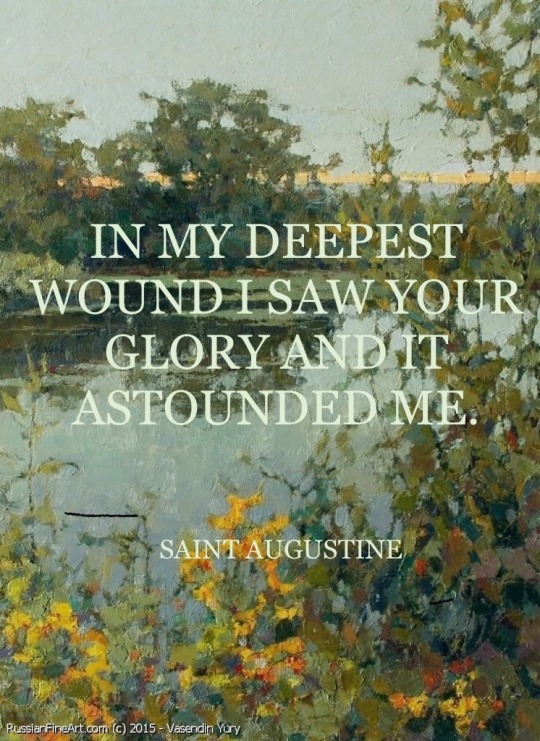
#cottagecore#cottage vibes#traditional catholic#christian blog#mine#catholic#naturecore#biblical womanhood#catholicism#meadowcore#traditional femininity#autumn#warm academia#bible in a year#catholic art#catholic life#catholic saints#catholic church#roman catholic#catholic quotes#jesus christ our saviour#christian quotes#saint augustine#st augustine#catholic wisdom
1K notes
·
View notes
Text
oh rachel 🥺

#rereading my year of biblical womanhood which i would recommend to anyone who is interested#ik how it sounds however it genuinely influenced me#i would consider it a feminist text
0 notes
Text
Marie and Mother Mary
Relationship : Marie & Milo Greer
Tags : Religious Imagery & Symbolism, Hurt/Comfort, Angst with a Happy Ending, Post-Partum Depression, Gender Roles, Catholicism, Motherhood, Italian American Marie Greer
Word Count : 1,510
ao3
Notes and Warnings:
this fic kind of surprised me because I'm not super into the Shaw Pack. But I do find Marie Greer's presence and bits and pieces we know of her character fascinating. I wanted to explore Marie's mind and feelings about being a mother when she's dealing with a gambling husband; and for her to raise someone like Milo Greer- she must've done a great job as a parent.
I took inspiration from my own experiences growing up with Catholicism and specifically in relation to the biblical Mary as a religious figure; and how mothers often find comfort in the thought of a figure who related in their struggles of motherhood and womanhood. It also has a theme of gender roles/ alluding to rigid gender identities because of the circumstances that Marie grew up in.
This fic isn't really... religious per se, and it takes more of a neutral standing while still criticizing how religion could be used to provoke feelings of personal guilt and trauma in someone who grew up in it, while also giving comfort to anyone that needed the universe to say that everything will be okay. If any of the themes may cause distress in you, I do implore you not read this fic, as consuming writing is a vulnerable activity.
The year was 1993. Marie Greer walked into the empty church lot with her baby in her arms. It had been decades since she last stepped on its stone floors. The security guard stationed outside looked at her strangely, but let her in once she asserted that she was there to pray.
She passed the main building for a small garden in the back. There were rows of wooden benches but nobody to be found. Good. Marie didn’t want company at the moment. To call it a garden was an overstatement- it was tiny and cramped, overgrown with vines. In front of the benches, the centerpiece of all the foliage was a statue of the Virgin Mary. Mother Mary, she thought, the double entendre not escaping her.
As soon as she sat down right in front of the statue- Milo wailed inconsolably like he always did.
The baby’s loud cries echoed disturbing whatever peace that was left from the place. Marie sighed, tired and weary, of this. He was an especially sensitive child, smaller than other babies his age. Marie was used to catering to people who’d fuss over the littlest things, Colm had a particular affinity for order and cleanliness whenever he came back from blowing his month’s earnings in a night, after all. The addition of Milo to the family just added more on her plate- she had to catalog every single one of his many allergies, and make sure that the room was never dusty because he’d have a coughing fit otherwise. The replacement of their popcorned ceiling had not been cheap, either, not with Colm leaving barely anything left after his trips to Vegas.
She did this all for love. For him. For her husband. But oftentimes, she felt like there was nothing left of her to give. Dry. Hollow.
She shushed Milo and lightly rocked him in hopes that he’d calm down but to no avail. He thrashed and turned, his nails accidentally scratched her in the arm. Marie winced and tried to soothe him, lightly patting his back. It took thirty minutes of rocking and soothing Milo until the baby went back to sleep.
St. Mary’s weathered ivory-colored face looked down at her, her expression blank and unmoving. Her lips were sculpted into a serene smile. Her pupil-less eyes gazed back at Marie.
Just like any other Italian-American family at the time, church was a routine for Marie growing up. Her mother would dress them in their Sunday’s best and wrangled her and her seven unruly siblings into the building. “Quit fussin’ your pigtails, Marie. I did that real pretty for you,” she’d chide. They’d sit in the back of the church because tardiness ran in that family’s blood like a curse.
Past the twelfth and thirteenth pews, God felt distant.
Marie would follow everything diligently. She stood up when everyone else stood up as the priest lifted the circular white wafer, the body of Christ, above the altar. As a child, her height wouldn’t allow her to catch a single glimpse of it. She’d comfort her younger siblings whenever they’d make a ruckus. But the whole thing- it went one ear out of the other.
She could’ve sworn she tried her best to listen and followed whatever the adults did.
I have greatly sinned, escaped past her lips as she did the same thing she had now, rocking her baby sister in her arms. At the time, she hadn’t even lost her milk teeth.
She stopped going when she married Colm. He was the opposite of the man her mother wanted her to marry, and in retrospect, she felt that it was one of the many reasons she liked him. His mind was raucous, his eyes wild and unmoored. Like nothing was holding him back. Colm used to be an ambitious man- the thrill of being an Investigator for DUMP perfect for his unrested soul.
Marie loved that part of him, the fact that he’d question everything, unbelieving in anything unproven.
He said that he wanted to purge the world of assholes- the unjust, those who hurt others for their own sake. As he turned in empowered criminals in the pursuit of it, he became one himself.
Marie met St.Mary’s gaze- almost challenging her hollow stare. Something surged through her, from the ache in her back settling to her tight diaphragm.
After the birth of her boy, Mary couldn’t cook or clean. All she did was stay in bed. Her sister came by to help take care of the house while Colm stepped outside as usual. She said that it was normal, her body had been through hell, after all. But the heavy feeling, the heaviness that settled in her chest persisted for the next two months.
Marie hated feeling helpless- her house a mess, and her baby cried constantly. She was a woman of action, and stagnation shackled her, leaving her trapped. Her visit to the psychiatrist- and the fourth edition of the Diagnostic and Statistical Manual- had told her that it was depression with a postpartum onset. She told the doctor that she refused to accept that she was a ‘bozo who was sick in the head’ and that she will cure herself with a margarita and a sorely needed hair perm alongside a fresh coat of manicure.
And look where that got her. Crying in front of a statue in church.
She still stared at the other Mary, the statue’s size and height caused her to look like she was looking down on whoever prayed in the confined space, guiding them iin a time of need. With that, for once, Marie realized that she was angry.
She wasn’t stuck to her mattress, fatigued, and lacked energy because of sorrow- she was so angry, the weight of her job description as wife, mother, woman, wolf, dog, bitch- Marie weighed down on her like anchors. She was angry, at the fact that Colm was nowhere to be found throughout all this, angry at her mother- for making her a mother to her own siblings when she was barely a child, angry at the fact that she couldn’t even love her child properly because she no longer had any love left in the hollow of her heart.
The emotions had clawed the insides of her ribs and caused her to let out heavy breaths- she was a dog panting for air when there was none.
“When does it get easier,” she demanded to the Mother of all Mothers through gritted teeth. “Tell me, Mary,” she begged, desperate, as tears started to roll down her face. “Tell me!”
“When does being a mother ever get any easier?”
Her voice was a whisper, barely audible, as she started to sob and heave quietly.
A soft breeze blew past the branches of the trees that surrounded her. It moved the leaves and allowed them to move gently back and forth. The statue still looked down at her, hand slightly outstretched in a supposed kind, helpful gesture. Ants crawled from the crack in the marble, they moved past Mary’s dress down to the hem, circling around her exposed foot, past the head of the sneak that was crushed triumphantly under her toes.
Marie sank into her seat, tired. She wiped her face with the back of her hand, sniffling. Unbecoming of her, she thought. She’d rather die than let anyone see her like this. But there was a comfort between women, she supposed. Damage from rain stained Mary’s cheek like tears- not unlike the thick mascara that currently ran down her own. The air was comfortable, easy, and Marie felt light. It reminded her of the 80s. Of girls in the bathroom of the disco, talking someone out of calling their past lovers as they applied lipstick and passed cigarettes between one another.
“I guess,” she sniffed. “I guess you know better, right?” she stared into a picture that hung on a distant wall. In it, St. Mary cried as she held Jesus' dying body. “He didn’t give you a hell of a good time either,” her voice cracked pathetically.
Girl, tell me about it, Marie imagined the statue said. The Virgin Mary had the voice of her best friend in college. Is that not what being a mother is? The pain so bad, it feels like you’re splitting in two? Going through all seven hells for your baby’s sake?
“Why do we even put ourselves through this,” she chuckled sardonically. “If I wanted to go through pain, I’d rather just listen to Colm talk about whatever fish he caught on the weekend.”
Mary didn’t answer, and Marie understood. Milo opened his big eyes in her arms and reached up to her with tiny hands. He giggled, light and oblivious to the puffiness of Mary’s face and the swell of her eyes. She cooed at him and held up a finger. Milo wrapped his hand around it, gentle.
St. Mary’s serene smile was still plastered on her face, her hand outstretched in the air between them.
61 notes
·
View notes
Text
This is a post about why I'm currently considering myself to be nonbinary, but it's not a post about gender.
-
It’s about 90% of the elementary school girls wanting to sit on the grass and talk about boys, and me still not understanding why even now, in my mid 30s.
It’s about ‘girls books’ that were all about friendship drama and worrying about menstruating, and how these were framed as universal concerns. My only friends were a pair of male cousins and we mostly cared about how our Lego ninjas’ castle infiltration was going. (The options were limited in my small library in the mid-90s.)
It’s about the ‘wild’, ‘disobedient’, and 'hyper' kids in the books I grew up with being so much better behaved than me, even on my best day, that I’d puzzle over it for weeks. Maybe if my parents were stricter I would be able to follow instructions easier? Maybe I was one of the mean kids in those books? Why was nobody in books like me?
It’s about the revulsion I feel when I think about ‘romantic’ gestures. Remembering my mom getting flowers from someone at church, and my aunt getting upset when I laughed about how she wouldn’t like them. MY MOM IS ALLERGIC TO FLOWERS, but a person who had nothing to do with the situation got offended that I didn’t consider them a thoughtful and nice gift. It makes me feel nauseous thinking about how I’m ‘supposed’ to think things that I don’t want and can’t use are loving gifts, just because society decided they were.
It's about people wanting me to already know their social conventions, and feeling like they are doing SO MUCH WORK when they make allowances for my mistakes, but thinking that learning anything about how I like to communicate is asking far too much of them.
It's about trying to make friends as a teen, and all the guys getting upset or weird when it became clear that wasn't code for dating.
It's about makeup giving me rashes, and my hair being done up giving me headaches.
It’s about women in lingerie in ads, and how I wore a headscarf for a year in reaction to how that made me feel.
It's about learning biblical gender roles, and getting really excited about the idea of protection and love in return for submission. And then finding out I like the BDSM understanding of protection and submission a lot more than I like the church's. That the person I love doesn't have the skill to protect me in ways that make submission safe.
It’s about having noise and light sensitivities, but being expected to enjoy crowded weddings.
It’s about people acting disgusted when I get too loud. Or excited. Or happy. Or interested.
It's about 'body language experts' that ""explain"" what various gestures mean, and it's about that month when my husband believed them and told me I was wrong about what I felt.
It's about definitions of 'womanhood' and 'humanity' that contain things that exclude me. And learning how to be okay with being the exception this time. And eventually getting so used to being the exception that I can no longer connect to the concept at all.
It's about only reading fantasy, now, because an elf's experience isn't supposed to be relatable.
It’s about learning that ‘I actually wanted’ things I didn’t want, and I was ‘unreasonable’ when I said no, and I was being ‘too sensitive’ when things physically or emotionally hurt.
It’s about being ADHD and aroace and weird in far too many ways; in a culture that seems to consider that to be willful rebellion and disrespect.
-
I don’t know how to be a woman. I don’t know how to feel good about being a woman. I don't feel I can fulfill the roles and dynamics associated with femininity. I can't present myself in the expected ways, and I don't really want to. In isolation, 'woman' feels like an accurate description. But than I think of OTHER people considering me a woman, and having the right to define what that means, and I just can't.
I need a break from considering myself female, so I can figure out how to do it in a way that doesn’t break me.
I want to learn how to interact with other people in a way that are less exhausting and painful. Engage on my own terms, and disengage if those terms aren’t fulfilled. Protect my own boundaries with strangers and acquaintances - people I don’t expect to make allowances for me. Not by demanding things of them, but by only offering myself on certain terms.
I don't want to ask anything about anyone else. I'm tired of it being about them. I want to ask things of myself. Ask for respect, and care. Figure out what that would actually look like. I want to process and let go of my self-hatred and feelings of being 'designed wrong'.
I've heard the terms 'acegender' and 'neurogender'. They don't excite me, but I recognize that's part of what's going on. Having ADHD gets in the way of performing womanhood to the point that it becomes hard to separate them. And some much of femaleness is defined in relation to being a part of a heterosexual romantic couple. I've got the man, but that hasn't helped me decode the mysteries of romantic and sexual attraction. The baffling concept of men having some sort of allure that women lack, of being a different category.
But, like my marriage isn't about my lack of attraction (it's about the choice I made to love him, and the decade plus of commitment we've had to each other), being nonbinary isn't about my lack of understanding of and ability to perform womanhood. It's about choosing to love myself, and recognizing that I've internalized enough harmful beliefs that I can't healthily identify as female right now.
It's not about gender.
#nonbinary#gender stuff#neurodivergence#asexuality#acegender#neurogender#when you spent years thinking your desire for they/them pronouns was about not being female#and it turns out it's actually about wanting to opt out of stereotypes that were destroying you
98 notes
·
View notes
Text
I LOVE MISTBORN
I LOVE MISTBORN. I love how the hero of ages is hidden underneath our nose just until their reveal. I love how Wax would absolutely be on the lord ruler's side if he was alive 300 years before. I love how Sazed fought so hard to liberate the Skaa then went on to do the exact same thing as the lord ruler did, only with more illusion of choice. I love Vin's arc with womanhood throughout the original trilogy. I love seeing how time twisted her narrative to the point that when Marasi looks at her statues an era later, she doubts that the Ascendant Warrior ever experienced fear and self-doubt. I love Steris's journey in embracing her highly functional mind. I love how Wayne and Melaan were doomed from the start, knowing he is a mortal and she is a Kandra, yet they chose to love each other for a brief period anyway. I love how Sazed's arc in hero of ages paralelled Wax's arc in bands of mourning, both a biblical reference to the book of Job. I love how kelsier is an immoral and hypocritic man yet he still puts the safety of Scadrial on the top of his list.
60 notes
·
View notes
Text
being a girl letting people curving their dagger into your heart for years, begging for love like a malnourished dog, addicted to desperation.
and when womanhood comes by and swallows a girl whole, that anger has balled into something unidentifiable, something mortifyingly biblical.
#franz kafka#girl blogger#girl interrupted#sylvia plath#female hysteria#girlblogging#girlhood#im just a girl#lana del rey#manic pixie dream girl#girlblog#coquette girl#girl interrupted syndrome#girlrotting#hell is a teenage girl#this is a girlblog#poetry#aurelia plath#words#prose#words words words#spilled ink#writings#the tortured poets department#tortured artist#writers on tumblr#writerscommunity#writers and poets#female writers#youre losing me
46 notes
·
View notes
Text
2024 Book List
Here's a list of some new books I've found interesting and enjoyable in the last year or so. If you have any recommendations, send them in! (See previous book lists here)
Beyond Religion: Ethics for a Whole World by Dalai Lama (2020)
Love and Quasars: An Astrophysicist Reconciles Faith and Science by Paul Wallace (2019)
Stars Beneath Us: Finding God in the Evolving Cosmos by Paul Wallace (2015)
Return of the God Hypothesis: Three Scientific Discoveries That Reveal the Mind Behind the Universe by Stephen C. Meyer (2021)
The Essential Writings of Christian Mysticism by Bernard McGinn (2006)
Pastrix: The Cranky, Beautiful Faith of a Sinner & Saint by Nadia Bolz-Weber (2014)
The Making of Biblical Womanhood: How the Subjugation of Women Became Gospel Truth by Beth Allison Barr (2021)
That All Shall Be Saved: Heaven, Hell, & Universal Salvation by David Bentley Hart (2019)
The Gospel of Inclusion: Reaching Beyond Religious Fundamentalism to the True Love of God and Self by Carlton Pearson (2009)
Is God Real? Exploring the Ultimate Question of Life by Lee Strobel (2023)
Why? Making Sense of God's Will by Adam Hamilton (2018)
Losing Our Religion: An Altar Call for Evangelical America by Russell Moore (2023)
The Psychology of Christian Nationalism: Why People Are Drawn In and How to Talk Across the Divide by Pamela Cooper-White (2022)
How Jesus Became God: the Exaltation of a Jewish Preacher from Galilee by Bart D. Ehrman (2015)
The Unseen Realm: Recovering the Supernatural Worldview of the Bible by Michael S. Heiser (2015)
No god but God: The Origins, Evolution, and Future of Islam by Reza Aslan (2011)
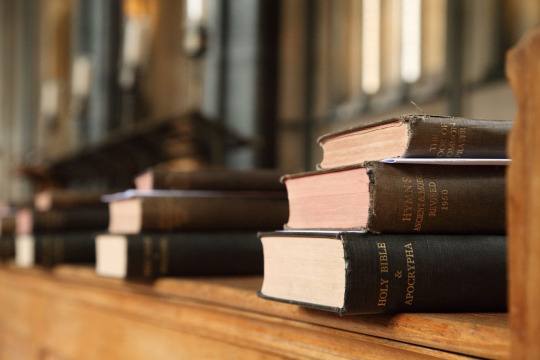
14 notes
·
View notes
Text
I'm reading The Making of Biblical Womanhood by Beth Allison Barr (finally), and I'm on Chapter Two and I'm so fucking mad. I'm fully on board with what she's saying. I'm mad at patriarchy. A lot of the arguments are familiar to me (I've been egalitarian for years), but the one that's standing out to me and making me rage at the way the church patriarchy has sanitised and obfuscated things, is learning how dang GENDER TRANSGRESSIVE women in the early church were. "One more piece of evidence that convinces me that the household codes should be read as resistance narratives to Roman patriarchy is how early Christians were perceived by the Roman world: as "gender deviants". . . . Not only did early Christians place women in leadership roles; they meet together on equal footing—men, women, children, and slaves—in the privacy of the home, a traditional female space. Christianity was deviant and immoral because it was perceived as undermining the ideals of Roman masculinity." Early Christianity was QUEER. It was all about breaking down gender norms of Roman society. Like Paul said "There is neither Jew nor Gentile, neither slave nor free, nor is there male and female, for you are all one in Christ Jesus." And I'm so mad that we haven't been taught that.
#the making of biblical womanhood#beth allison barr#women in the church#early christianity#queer christian#the apostle paul#ancient rome#roman empire#church history#gender thoughts#gender stuff#feminist christianity#egalitarian#dismantle patriarchy#bible history
11 notes
·
View notes
Text

Jusepe de Ribera, Magdalena Ventura with Her Husband and Son, 1631, Museo Fondación Duque de Lerma, Toledo, Spain.
The Guardian: The Bearded Woman of Abruzzi: a 17th-century hero of gender fluidity
[...] Ribera’s painting Magdalena Ventura, also known as La mujer barbuda – The Bearded Woman – shows its subject breastfeeding her baby. This is Ribera’s none too subtle way of showing us that Ventura is anatomically a woman, for there is no sign of that in her face. Her huge, black beard makes her look like an Old Testament patriarch. Her facial features too are heavy and powerful, in other words they conform to common assumptions of what looks “masculine.” Her body is big and muscular, her hands strong and hairy. Her clothes are finely coloured but gender-neutral – again, they evoke a Biblical prophet. Ventura’s husband, standing behind her right shoulder, looks less of a man than she does. His beard is smaller, his physique slighter. Ribera captures the fact that he is overshadowed by his wife’s fame, for Magdalena’s defiance of 17th century images of womanhood made her a celebrity in Italy. She came from Abruzzi where, according to the inscription on a stone slab in Ribera’s painting, she gave birth to three sons before her beard suddenly grew when she was 37 years old. In the painting she is 52. Ribera painted her in Naples, where he worked as a court artist. The city was under Spanish rule and Ribera, born in 1591 in Valencia, mixed a Spanish sense of gravity with the courageous realism Caravaggio had introduced to Naples a quarter of a century earlier. The Viceroy of Naples, fascinated by the fame of “The Bearded Woman of Abruzzi”, commissioned Ribera to paint this mysterious masterpiece. The inscription calls Magdalena Ventura a “great wonder of nature”. That says a lot about how she was seen. Ventura crossed boundaries and broke down categories. Today, we might see this as a conscious and radical defiance of oppressive norms. In the 17th century it made her a curiosity, perhaps even a monster. There was no concept of social progress, let alone of gender revolution. The order of nature was God-given and unchanging. There was no idea of evolution either in the forms of animals or the customs of human beings. Yet there were manifest exceptions to the order of things: hybrid beasts, cross-bred plants, prodigious births, and bearded women. Ribera portrays Ventura with a calm and sombre naturalism. He also gives her great dignity. She is a unique being in his eyes: someone who is neither one thing nor another, and yet whose humanity outshines what looked to contemporaries like freakishness. This painting embodies what makes Ribera such a moving and memorable artist: his tender, compassionate eye for the real world. He is one of the stars of the National Gallery’s exhibition Beyond Caravaggio, which is well worth seeing this Christmas or when it tours to Dublin and Edinburgh in 2017. Yet even by his standards or those of Caravaggio, this is a radical work of realism. It puts truth before all conventions of beauty. Art in Ribera’s day saw women as goddesses and saints, martyrs and nudes. Here a woman with a man’s beard and a man’s face stands breastfeeding her baby. Ribera sees beyond the conventions of art and the assumptions of his time – if someone does not fit our expectations, their uniqueness has to be recognised for what it is. Ventura is a fact. She is real. Here she stands. In her absolute originality, Ribera sees not just some freak of nature but the wonder and enigma of individuality itself. Magdalena Ventura broke every law of her world – and Ribera immortalised her for doing so.
(Jonathan Jones)
#art#Jusepe de Ribera#Magdalena Ventura with Her Husband and Son#The Bearded Woman#La Mujer Barbuda#Magdalena Ventura con Su Marido#Magdalena Ventura#Spanish art#Italian history#Abruzzi#17th century#1600s#1631#Toledo#Spain#Museo Fondación Duque de Lerma#hypertricosis#women in history#articles#The Guardian#Jonathan Jones
4 notes
·
View notes
Text
Super Villains as Queer Icons

by Ken Ham
In a recent article on the Atlantic magazine’s website, there was a culture piece that looked at horror movie villains as “queer icons.”
Without delving too deeply into the article—which included many forced associations as well as some movies which were specifically written from the LGBT perspective, the author, Mary Retta, looked at several different “movie monsters,” and one association really stood out. She quoted another author, Susan Stryker, who in 1994 said this in regard to Frankenstein’s monster: “The transsexual body is an unnatural body. It is the product of medical science. It is a technological construction. It is flesh torn apart and sewn together again in a shape other than that in which it was born.”
We’ve discussed numerous times the horrors of surgical mutilation and unnecessary hormone treatments that the transgender movement and an all-too-willing medical community have foisted upon young people who are undergoing a crisis in their lives or just the uncomfortable and tumultuous throes of puberty. Rather than looking to heal those who are hurting, this only adds to the pain and confusion of these young people. But the above “body” statement struck me as a reminder that everyone is remade in one way or another. Either we “remake” ourselves in our own fallen and distorted image by surgery, addiction, hedonism, false religion, doing what is right in our own eyes (Judges 21:25), or some other panacea which excludes God. Or as Scripture teaches, we are remade in the image of Christ.
While at first blush it may seem counterintuitive to compare human birth and Christian rebirth with Frankenstein and his monster, there are some striking parallels and contrasts. I’ll briefly list a few below, based on the “body” quote above. The Bible speaks about God “knitting” or “intricately weaving” us together in the womb (Psalm 139:13, 15). The development of the child in the womb is one of the wonders of the created world, wherein genetic material from the father and mother comes together to create a new, unique individual. Scripture rightly says that people are “fearfully and wonderfully made” (Psalm 139:14). By contrast, Victor Frankenstein crudely sewed together his monster, hindered by the constraints of his abilities and tools. The resulting abomination is rejected in disgust by his creator.
There have been tremendous advances in reconstructive surgery, where surgeons reconstruct accident victims’ bodies to resemble their pre-accident selves. Prosthetics technology also gives people artificial parts to either compensate for birth defects (a sad consequence of the fall) or loss of body parts in accidents. These are good things and can be looked at as medical science attempting to alleviate some of the consequences of mankind’s sin.
Such science is also co-opted for so-called “gender affirmative care” in which biological males receive surgery and hormones to feminize their appearance and vice versa for women. However, there is no way to truly turn a male into a female or a female into a male. A man will never have the capacity to bear and nurse offspring as a mother does, and a woman will never father children. This sad imitation of manhood or womanhood robs them of their God-given femininity or masculinity that should be healthy and honoring for them as image-bearers of God. In this sin-cursed world, however, people are often confused, connived, or coerced into believing lies about their bodies, gender, or sexuality. Recently, videos have gone viral of “de-transitioners” who, having been given “cross-sex” hormones during their teen years, look neither masculine nor feminine and now realize the preciousness of what they gave up in this confusion.
While probably not the first comparison that comes to mind when thinking of the body of Christ and its members, Mary Shelley’s Frankenstein has some curious biblical themes running throughout its pages. Whether they were entirely intentional or not is unclear (although it seems certain that many were, based on her 1831 introduction to Frankenstein). Shelly wrote the following lines to explain the moment that the monster came to life: “Frightful must it be; for supremely frightful would be the effect of any human endeavour to mock the stupendous mechanism of the Creator of the world.” Her book contains many other biblical allusions, usually antitheses to the creation account, as would be expected in a tale where man plays God in creating what Victor Frankenstein deems a “wretched monster.” Yet all these themes in the book showcase that Shelley had in mind an anti-creation horror concept embedded in her book that acknowledged the perfectness and goodness of the Genesis creation account and that man’s attempt to remake himself or attempt to instill life is futile and only leads to catastrophe. Only God can create and recreate humans (by new birth into Christ), as we are made in his image.
6 notes
·
View notes
Text
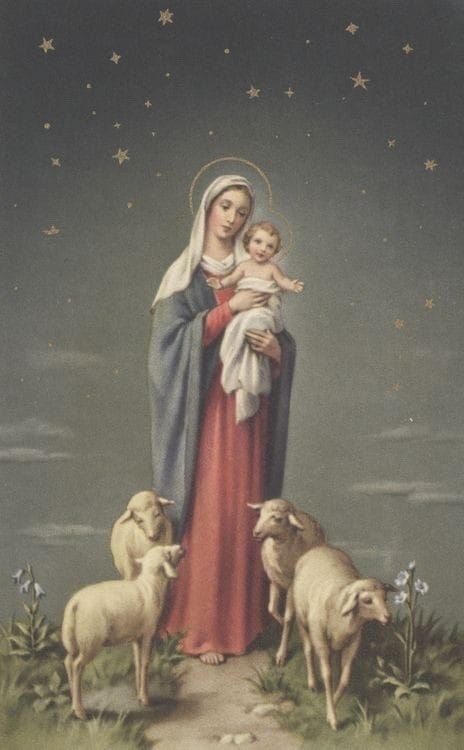
Holy Mary, Mother of God, pray for us.
#traditional catholic#christian blog#biblical womanhood#catholic#catholicism#traditional femininity#bible in a year#bible verse#catholic saints#holy mary#ave maria#virgin mary#blessed virgin mary#mother of jesus#mother of god#mother mary#catholic women#catholic life#catholic art#pray for me#pray for us#prayer cards#prayer#catholic church#roman catholic#catholocism#traditional values#trad catholic#traditional catholicism#traditional catholic saints
123 notes
·
View notes
Text
always get a little teary thinkign about rachel
0 notes
Text
lent 2023: what i read, watched, and listened to
i gave up reading fiction for lent, which freed up... um... a lot of time.
read:
Jesus and John Wayne: How White Evangelicals Corrupted a Faith and Fractured a Nation by Kristin Kobes DuMez [audiobook]
The Evangelicals: The Struggle to Shape America by Frances Fitzgerald [audiobook]
Inspired: Slaying Giants, Walking on Water, and Loving the Bible Again by Rachel Held Evans
The Making of Biblical Womanhood: How the Subjugation of Women Became Gospel Truth by Beth Allison Barr [audiobook]
The Bible With and Without Jesus: How Jews and Christians Read the Same Stories Differently by Amy-Jill Levine and Marc Zvi Brettler*
Wholehearted Faith by Rachel Held Evans with John Chu [audiobook; this was posthumously finished and narrated by her friends, so it can be a lot.]
Searching for Sunday: Loving, Leaving, and Finding the Church by Rachel Held Evans [audiobook; this is almost the only book on the list that i rated under 4 stars, only because i found it less cohesive and compelling than the previous two books of hers i had just read. my extremely general opinion on rhe is that i dislike her writing voice in a lot of inconsequential ways, but appreciate her thoughts on a much deeper and more important level.]
watched:
Same God (2018, documentary) [i was a student at wheaton college when this happened. watching it happen again felt about 10 years long.]
The Eyes of Tammy Faye (2021)
I Survived I Kissed Dating Goodbye (2018) [this film is in no way a wholesale rejection of purity culture, but it was interesting to me, especially followed by the podcast episodes I Kissed Christianity Goodbye and Reflections on Christian Celebrity. if you're interested in what happened in josh harris' church before all of this, this is a great article. tw for sexual and spiritual abuse, including but not limited to csa.]
other nonfiction read, though not for my lenten study:
The Library Book by Susan Orlean
Fun Home: A Family Tragicomic by Alison Bechdel
The Fire Never Goes Out: A Memoir in Pictures by ND Stevenson
Overdue: Reckoning with the Public Library by Amanda Oliver [this is the other book that i rated under 4 stars; it resulted in such mixed feelings that i wrote a goodreads review, which i hate doing.]
Bird by Bird: Some Instructions on Writing and Life by Anne Lamott
An Odyssey: A Father, a Son, and an Epic by Daniel Mendelsohn*
*still reading
13 notes
·
View notes
Text
What are you supposed to get your mom who chose xtian fundamentalism and right wing politics over loving you? Heaven forbid it's awkward over new years when she's there and I got everyone else a present but her.
Oh shoot, I'm gonna get her one of the two books I begged her to read before she pulled a total Matt Walsh and I had to go no contact a year ago.

She probably won't read it just like I didn't read the biblical womanhood manuals my parents tried giving me for christmas a few years back. Can't think of anything better though.
4 notes
·
View notes
Text
Books I read in March 2023
When I Spoke in Tongues by Jessica Wilbanks. This is a memoir about the author's deconstruction from her Pentecostal childhood faith. It also includes details of her recovery process from an eating disorder and her journey to become a writer. I was really interested in her travel to Nigeria in order to explore Yoruba influence on Pentecostal worship. This was interesting to me because one of my grad school classes involved studying Yoruba religion in Cuba, which also has a large emerging neo-Pentecostal demographic. Although some of my views and experiences with Pentecostalism were very different from Wilbanks's, I appreciated the chance to think carefully about how to approach my experiences through writing and academia intentionally and fruitfully.
Biblical Womanhood by Beth Allison Barr is nonfiction arguing that biblical womanhood as understood by American evangelicals today is not a straightforward reading of the Bible but developed over a long and complicated history, driven by men's desire for power over women. Some of the history was new for me but as a New Testament student I liked her exegesis.
Leftover in China by Roseann Lake is nonfiction about women in China who remain unmarried over age 30-35. There's a lot of detail here about Chinese marriage norms historically and in the present, the impact of the one-child policy meaning that there were fewer girls in China and the girls who were born suddenly had unprecedented attention and access to educational and financial opportunity. I was really interested in the interviews with various women--it offered a personal glimpse into the challenges, privileges, and priorities of these unmarried women.
The Last Queen by Chitra Banerjee Divakaruni is historical fiction about the life of Maharani Jindan. This book has romance, politics, trauma of war, and ends with a very moving parent-child tragedy of assimilation and colonization. (Spoilers: you can blame a whole lot of problems on the British.)
The Gilded Page by Mary Wellesley. Nonfiction about handwritten manuscripts, mostly centered on medieval England. Wellesley is interested in what the manuscripts reveal about the people who wrote them by hand: marginalia, errata, other traces of everyday life. This book wove in neatly with Biblical Womanhood's discussion of Margery of Kempe. I was also really interested in all the detail it gave about the ascetic lives of anchoresses.
Heart Berries by Terese Marie Mailhot. This memoir follows the author through her struggle as an Indigenous woman to leave an abusive relationship, learn how to live with bipolar disorder, and parent her two sons. Mailhot makes a conscious effort not to write an auto-hagiography, showing her worst moments in full detail that earns the audience's sympathies even more effectively. I love reading authors' memoirs because at some point they turn into books about writing books. It was really cool to see Mailhot's success after how hard she worked to earn it.
The Last Cuentista by Donna Barba Higuera. Dystopian middle grade scifi. When Earth becomes unliveable, Petra Peña, along with her parents and younger brother, are supposed to be part of a privileged few cryogenically frozen to be woken up 300 years in the future on a new colony planet. When things go wrong Petra stays conscious through her stasis and wakes in a world where no one else remembers stories of Earth. This book was really intense for middle grade fiction! It's a very thoughtful look at grief, love, stories as a means of continuing culture, environmentalism, critique of censorship, and at its heart an argument that conflict comes not from differences between people but from unwillingness to embrace those differences. I appreciated how this book approached its protagonist's disability in a eugenicist dystopia. I'd recommend this book for fans of Tamsyn Muir's Locked Tomb series (particularly if you liked the John chapters in NtN).
The Preacher's Wife by Kate Bowler. This book was already on my list but then Beth Allison Barr talked about Kate Bowler in Biblical Womanhood, which made me even more interested. Bowler looks at celibrity women within evangelicalism, arguing that even the most conservative church spaces offer these spotlit women subtle but significant power, and even the most egalitarian-seeming liberal church spaces still embrace social norms that uphold patriarchal power over women. Fun fact: this book also cites one of my religion professors from undergrad!
How Far the Light Reaches by Sabrina Impler. This book is a collection of memoir essays in which various marine animals are used to illustrate the author's life. The Chinese sturgeon illuminates immigrant familiy history, an octopus watching her eggs pairs with the author's relationship with their mother in regards to disordered eating, and life in high temp, and high pressure volcanic vents are paired with the persistence of a queer community in Seattle. From a craft perspective I'm so impressed by the structure of this work, and it was a real pleasure to read.
Bitter Orange Tree by Jokha Alharthi. Realistic fiction in which an immigrant university student remembers and traces the life of her Omani pseudo-grandmother, who dies just as the narrator is leaving for Britain. There's a lot of love and grief and memory and love again in this book, and the writing is just beautiful.
Bible and Sword by Barbara W. Tuchman explores the historical relationship between Britain and Palestine, particularly the history of Zionism in Britain. (Spoilers: you can blame a whole lot of problems on the British.)
Please Look After Mom by Kyung-Sook Shin. Realistic fiction about the family of a woman who goes missing after she gets separated from her husband at a subway station in Seul. The book switches between the woman's children and husband as narrators, as they search for her and remember her. This book made me think a lot about my own aging parents as I read how easily the children overlook their mother's health issues and failing memory.
The Adventures of Amina al-Sirafi by Shannon Chakraborty. Historical fantasy about a notorious pirate coming out of retirement to rescue the daughter of her old crewmate, in part motivated by love for her own daughter. This book is a bit sweary and has PG-13 level sexual content. We've got ruffians and scallywags, sea monsters, rigorous hospitality, legendary treasures, magic and scholars of magic, and some really thoughtful depictions of religious characters whose faiths inform their difficult decisions. Amina wrestles with her nostalgia for her pirate days in light of her post-retirement efforts to be a devout Muslim. I love how Chakraborty writes interactions between characters of different religions.
Nonfiction:8
Fiction:5
Total nonfiction for 2023 so far:18
Total fiction for 2023 so far:10
Total books read for 2023 so far:28
I'd love to chat about any of these books and I'm always happy to provide content warnings on request! What are y'all reading lately? Anything you really love or really hate? Any recommendations?
9 notes
·
View notes
Note
This is just a suggestion and feel free to ignore! Something I think would be helpful would be to include at the top of your "Fundies and Adjacent I Follow" type posts a summary of what makes them fundie or adjacent. I haven't heard of the majority of them, so I can't tell if it's a friend of the Duggars, someone with a blog that spouts hate in the name of Christianity, a vlogging family, or just a random family that just so happens to have a bunch of kids. Maybe for the lesser known follow up pregnancy or engagement announcements where most fundie followers would go "who is this...?" linking back to the main post? Thanks for all you do!
Fundies and Adjacent I Follow: Why are they notable (Last Names A-C)
Great Idea! I will be doing all the families I have posted by last names. I am going to start here with A-D. You can see links to all families here.
Alexander Family:
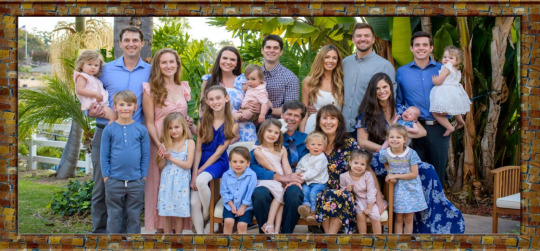
The Alexander Family of California is headed by father Ken Alexander and mother Lori Falk. They have been married since 1980 and share 4 children, 4 children-in-law, and 16 grandchildren as of 11/20/2023.
Lori Alexander runs a blog and Youtube channel called "The Transformed Wife" where she discusses biblical womanhood, marriage, and motherhood.
Anderson Family:
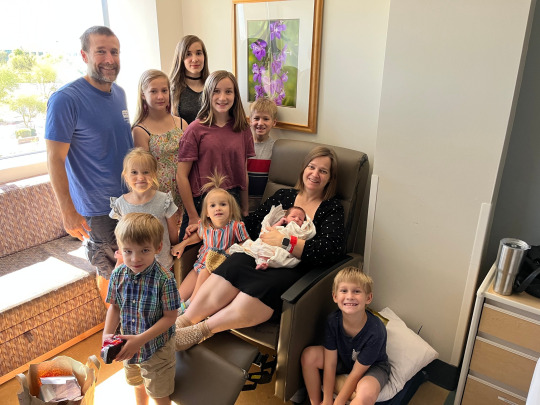
The Anderson Family of Arizona is headed by father Steven Anderson and mother Zsuzsanna Toth. They have been married since 2000 and share 12 children as of 11/20/2023.
Steven is the New IFB movement and pastors the Faithful Word Baptist Church.
Zsuzsanna runs a blog called "Are They All Yours?"
Andregg Family:
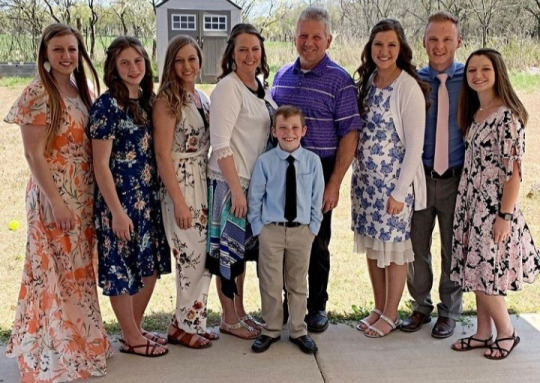
The Andregg family of Arkansas is headed by father Dwayne Andregg and mother Melanie McPherson. They have been married since 1999 and share 6 children, 1 son-in-law, and 2 grandchildren as of 11/20/23.
They are connected to the Wikstrom family as their daughter Lauren married the Wikstrom's son Devin.
The Andreggs have also been notable friends with the Duggar family for years and are members of the IBLP. They were featured on the Duggar's TLC shows.
Dwayne is the former campaign manager for Jim Holt.
Baird Family:
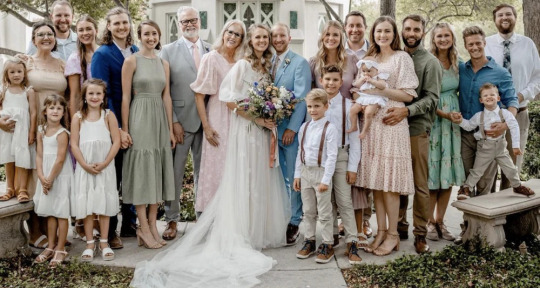
The Baird family of Texas is headed by father Michael Baird and mother Heidi Mick. They have been married since 1982 and share 8 living children, 6 children-in-law, and 9 grandchildren as of 11/20/2023.
Daughters Bethany Beal and Kristen Clark run Girl Defined Ministries.
Balka Family:

The Balka Family of Tennessee is headed by father Mike Balka and late mother Kristy Dotson. They were married in 1993 and share 6 children, 3 children-in-law, and 4 grandchildren as of 11/20/2023.
Son Kelton is married to Josie Bates.
Ballinger Family:

The Ballinger family of Arkansas is headed by father Bob Ballinger and mother Jessica Thomas. They have been married since 1998 and share 7 children, 1 daughter-in-law, and 4 grandchildren as of 11/20/23.
Their son Bobby married Austin Forsyth's sister Meagan.
Bob Ballinger served in the Arkansas General Assembly from 2013 to 2023. Jed and Joy Duggar served as interns for him.
Barrett Family:

The Barrett family is headed by mother Gabby Barrett and father Cade Foehner. They have been married since 2019 and share 3 children as of 11/20/23.
Gabby Barrett is an accomplished country music singer who originally gained fame on American Idol.
The couple was good friends with Jeremy and Jinger Vuolo while living in LA. Jeremy officiated their wedding.
Bates Family:

The Bates Family of Tennessee is headed by father Gil Bates and mother Kelly Jo Callaham. They have been married since 1987 and share 19 children, 11 children-in-law, and 29 grandchildren as of 11/20/2023.
The Bates family rose to prominence via their friendship with the Duggar Family. They have since gone on to have their own shows with TLC and UPTV.
They are long-time members of the IBLP and Gil Bates is on the board.
Many of the children have popular social media presences.
Bontrager Family:
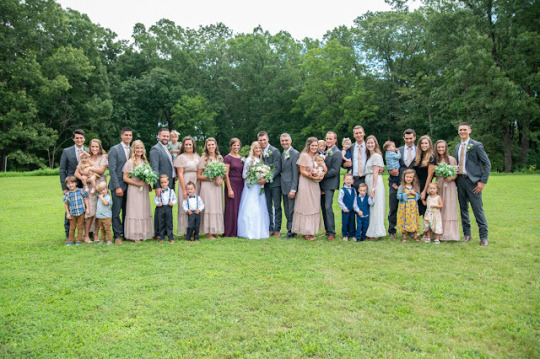
The Bontrager family of Iowa is headed by father Marlin Bontrager and mother Becky. They have been married since 1989 and share 10 children, 7 children-in-law, and 14 grandchildren as of 11/20/2023.
The Bontragers are friends of the Duggars and sons Carson and Joshua are married to Bowers girls.
The unmarried Bontrager children are in a band with their parents.
Bowers Family:
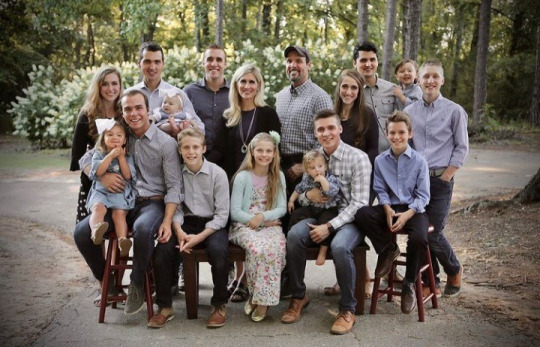
The Bowers Family of Alabama is headed by father Curtis Bowers and mother Lauren McAlvany. They have been married since 1989 and share 9 children, 2 sons-in-law, and 6 grandchildren as of 11/20/2023.
The family is friends of the Duggar Family. Daughters Carolina and Cassidy are married to Bontrager boys.
Bure Family:
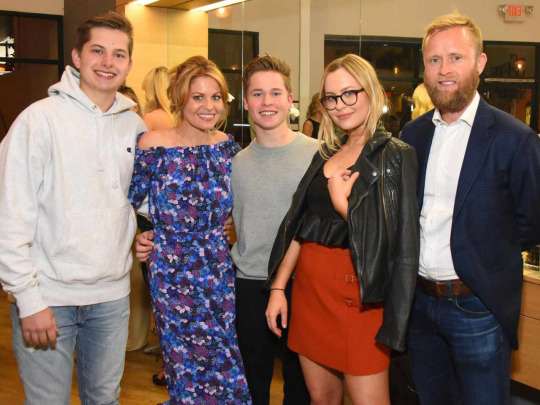
The Bure family is headed by father Valeri Bure and mother Candace Cameron. They have been married since 1996 and share 3 children as of 11/20/2023
Candace was a main cast member of Full House and is now an outspoken Christian actress and sister of Kirk Cameron.
Burnett Family:
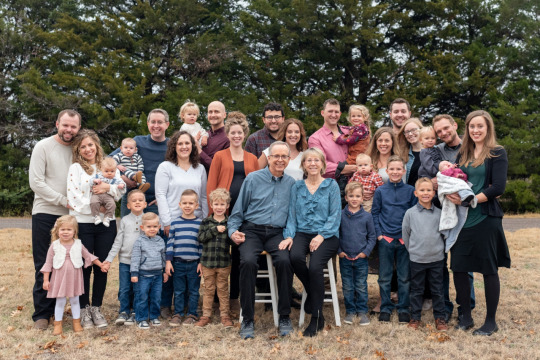
The Burnett family of Oklahoma is headed by father John Burnett and mother Cheryl Clay. They have been married since 1981 and share 8 children, 8 children-in-law, and 19 grandchildren as of 11/20/2023.
They daughter Abbie married John Duggar in 2018. They were at one point members or running in the circles of the IBLP, but I am unsure of the Burnett family affiliation now.
Caldwell Family:
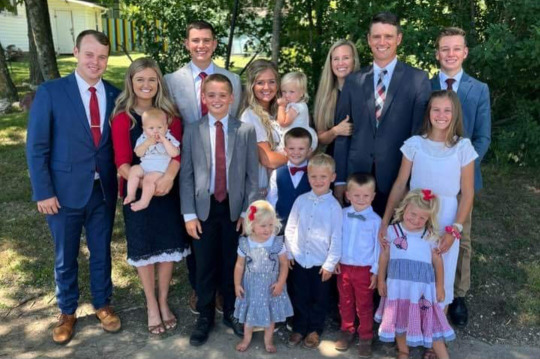
The Caldwell family of Arkansas is headed by father Paul Caldwell and mother Christina Hamrick. They have been married since 1998 and share 9 children, 1 son-in-law, and 4 grandchildren as of 11/20/2023.
Paul Caldwell is the former pastor of the Duggar family church. Their daughter Kendra married Joseph Duggar in 2017. The family was at one point in the IBLP. I am unsure of their current affiliation.
Cameron Family:

The Cameron Family of California is headed by father Kirk Cameron and mother Chelsea Noble. They have been married since 1991 and share 6 children and 2 children-in-law as of 11/20/2023.
Kirk is a former main cast member of Growing Pains and was an actor in the Christian film FireProof. He was featured on several episodes of 19 Kids and Counting.
Clark Family:
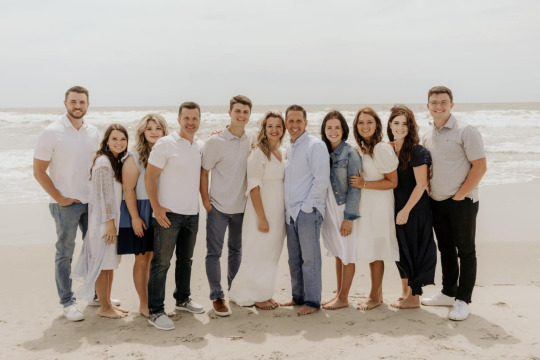
The Clark family of New Jersey is headed by father Charles Clark Jr. and mother Aprile. They share 3 children, 2 children-in-law, 9 granchildren, 6 grandchildren-in-law, and 7 great-grandchildren as of 11/20/2023.
The family runs a church called Solid Rock Baptist Church. They also have a band called Clark Family Band.
Grandson Travis is married to Katie Bates.
Collingsworth Family:
The Collingsworth family of Ohio is headed by father Phillip Collingsworth Sr. and Kimberly Keaton. They have been married since 1986 and share 4 children, 4 children-in-law, and 9 grandchildren as of 11/20/2023.
The family makes up the Collingsworth Family musical group. Daughter Olivia has made music with Lawson Bates. The family also rubs shoulders with the Duggar family.
The Collins Family:

The Collins family of Texas is headed by father Mandrae Collins and mother Karissa Goering. They have been married since 2007 and share 10 children as of 11/20/2023.
Karissa's online presence has garnered the family a lot of negative attention. She promotes giving family size up to God.
Coverett Family:
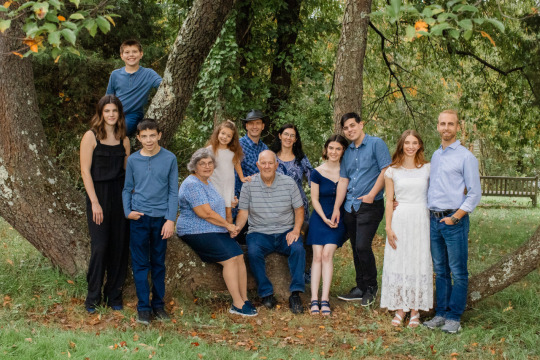
The Coverett Family of Pennsylvania is headed by father Jeremy Coverett and Ellen Vincent. They have been married since 2001 and share 6 children and 1 son-in-law as of 11/20/2023.
Ellen has been in the downline of Jill Rodrigues for many years. Ellen is the sister of the matriarch of the Hill family and introduced Kaylee Rodrigues and Jonathan Hill. Heidi Coverett is now engaged to Timothy Rodrigues.
Crane Family:

The Crane Family of Arkansas is headed by father Josh Crane and mother Melodie. They share 7 children, 2 children-in-law, and 3 grandchildren as of 11/20/2023.
Daughter Madi and her husband work for PragerU along with Lemuel Reber.
The Crane Family is friends of the Duggars and former IBLP members. It is speculated that some leaked information about the Duggar family has come from friends of the Cranes.
6 notes
·
View notes